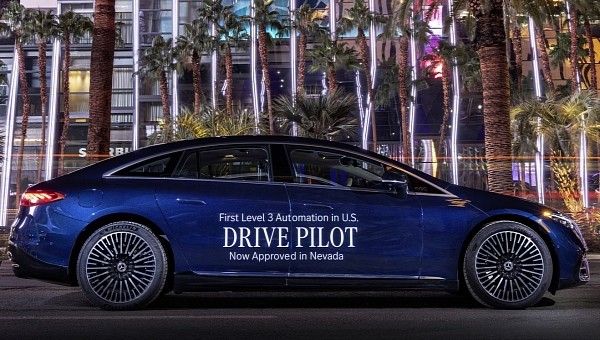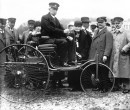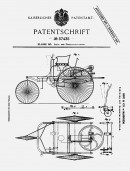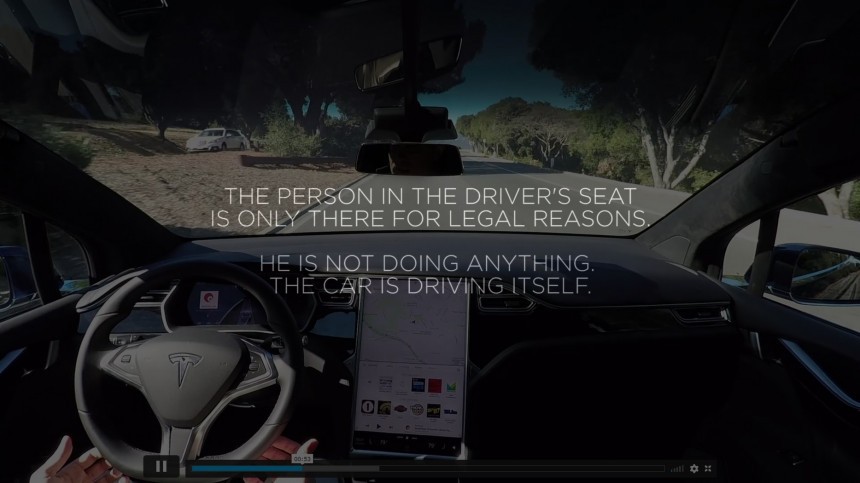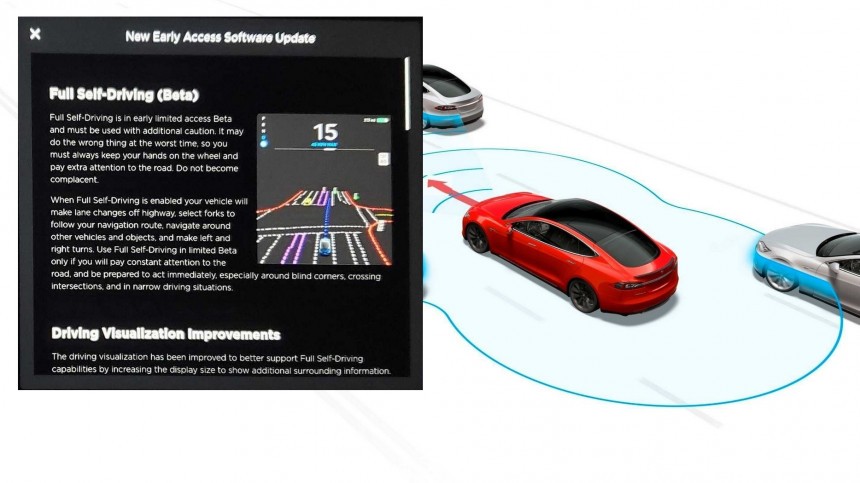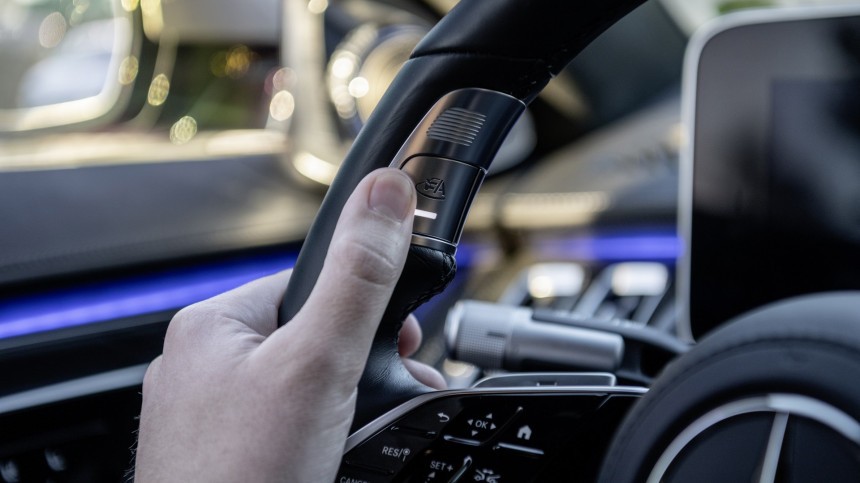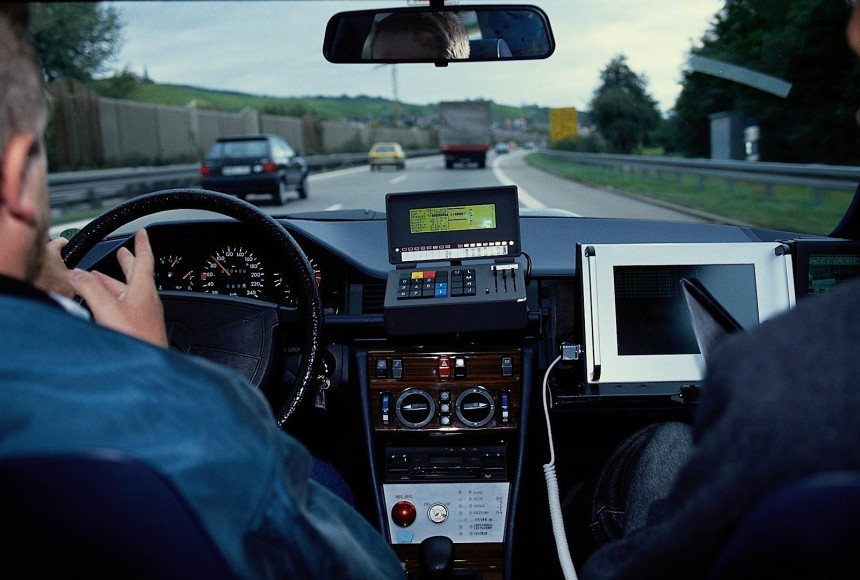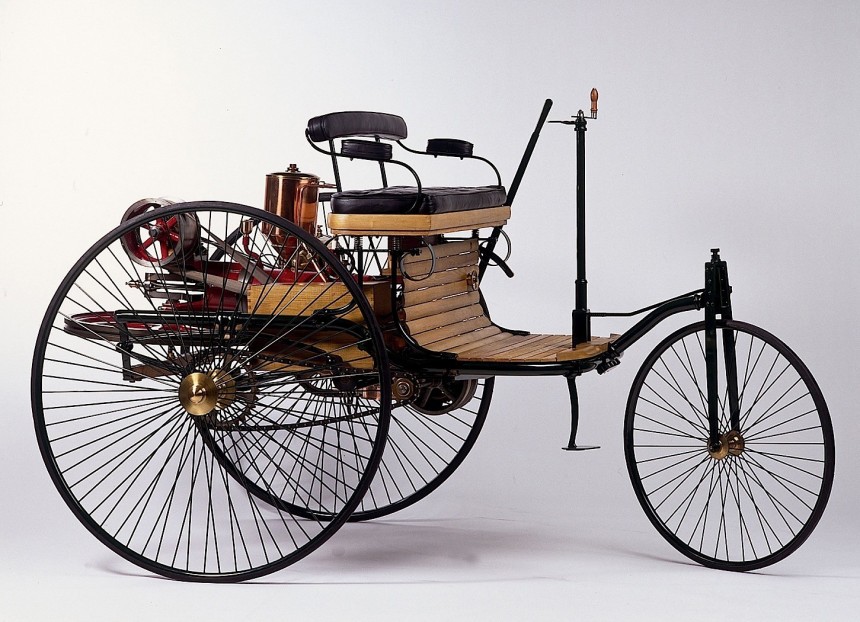This last week was an interesting one in the history of the automobile from several angles. The first of them is the fact that the patent for the first motor vehicle powered by a petroleum derivative was granted on January 29th, 1886. The second is that, about 137 years later, but on a different day, Mercedes-Benz has certified its Drive Pilot System for SAE Level 3 ADAS for Americans.
At first, it may seem like this is all about what Mercedes-Benz has accomplished in 137 years since that first patent filed by Carl Benz to a system that allows the motor vehicle to drive itself in certain conditions. The rule at hand here is to always have a human driver behind the wheel, attentive to the road and capable of driving when the system requests it.
This sounds so familiar, right? Well, Tesla fans had a bit of fun with the news, as the system has several clear limitations. Sure, it is the first one of its kind to get certified with SAE Level 3 automated driving capabilities, while the laws in the U.S. do not require the certification per se, as it is not forbidden to operate the vehicle with a system like this.
Another element that we learned this week was the fact that Tesla will launch Hardware 4.0, or Autopilot HW4, which is described as a hardware update to unleash its "Full Self-Driving" system.
We are using quotation marks here because the system cannot be called that way in California starting this month. The latter is another thing that should be taken into consideration, referring to what happened this month in terms of key automotive brands and technologies.
Earlier this month, we learned that the 2016 Tesla Autopilot demonstration video was staged, according to a former employee of the firm. What cannot be gauged from all this is how many people had seen the video and decided to get FSD as an option and then expected it to operate as they had seen in the video.
In a Q&A session after Tesla's Q4 2022 earnings call, Elon Musk explained that the upgrade from HW3 to HW4 would not be "economically feasible," and that happens because of "the cost and difficulty." This may be the third interesting news that I am referring to in the lead of the article.
In other words, it means that Tesla is not going to do any HW4 retrofitting, and whoever tries it independently will probably find that the cost was not worth it, as well as the effort of dismantling the vehicle, installing the specialized parts, and fitting it back together and then making it work.
With the risk of being called a hater here or just being mean, I feel the need to underline a few things, and they are all linked to the several events that I mentioned above. To clarify, I am not authoring this with malicious intent.
If you take every bit of this context into the equation, it means that owners of existing Tesla models do not have a chance of getting real Full Self-Driving capabilities, despite being promised this for years and paying up to $15,000 for the optional equipment and software back when they got their cars. In my book, doing so is either an overly optimistic view of what the capabilities of the technology were or just straight-up lying.
After all this, I am curious to learn if there are people who still think that Tesla cars can drive themselves everywhere. In reality, they also can only operate under certain conditions, and it may work for brief moments, or for much longer, without particular guarantees. I also want to know if they sincerely think that the limited capabilities of Mercedes-Benz's Drive Pilot system are something to laugh about. Limited, sure, but laughable, they are not.
Unlike Tesla's system, the one used by Mercedes-Benz cannot be tricked with a set of magnets or a water bottle zip-tied with to the steering wheel. To be fair, at one point, the Mercedes-Benz adaptive cruise control system with lane assist found in the S-Class could have been tricked with the latter, but that does not work on the new Drive Pilot.
Please remember that attempting to “trick” a vehicle to “drive itself” by bypassing its fail-safes or limitations with devices or schemes only means tricking yourself into thinking that you are safe on the road, which is not true. In the end, you are responsible for the driving part for now, and it might stay that way for several more years, to say the least.
While the system from the German brand has very specific limitations, it has been certified to be an SAE Level 3 ADAS, which Tesla's AP/FSD system is not. At least nobody bothered certifying it, and it looks like the vehicles that have already been manufactured are not eligible for a hardware upgrade that might make them capable of “seeing” more than what their cameras can see.
Mercedes-Benz has implemented various fail-safes within its system, including dual brake and steering actuators with a dedicated 12V battery, LiDAR, road wetness sensors, microphones for detecting emergency vehicles, and other redundancy systems that offer peace of mind and a solution in the event of a potential failure.
In other words, Mercedes-Benz wants to build trust in its Drive Pilot system. The German brand has 137 years of confidence behind its reputation, and it does not want to risk anything in the process. Its reputation is more important than being the first to market with a system that may or may not work as desired, and most legacy automakers have understood this.
As a reference, back in 1994, Mercedes-Benz tested an autonomous driving prototype based on the W140 S-Class in the form of a modified 500 SEL that had a computer in control of the steering, brakes, and throttle, with two computers evaluating images of the journey in real-time using two wide-angle cameras.
The test was deemed a success, as the vehicle drove on a three-lane freeway in normal traffic over 1,000 kilometers (about half the distance from Florida to New York City, or 621 mi) in total, in both directions, reaching speeds of up to 130 kph, and being capable of doing lane changes and ever overtakes (with the driver's approval beforehand).
Meanwhile, Tesla Motors was founded back in 2003, released its first car in 2005, and had a pivotal role in the popularization of the modern electric vehicle.
As I noted in a previous article, GM had this opportunity with the EV1 and failed, and Toyota deserves its share of the blame with its RAV4 EVs that were once offered and then taken back after the trial was concluded. The RAV4 EV was almost 20 years ahead of its time, and it still got killed off.
In just one month, we got to celebrate 137 years since the first patent of a motor vehicle running on gasoline was approved, and the same brand managed to get an SAE Level 3 ADAS system certified in the U.S., while another company that only builds EVs has a competing system that some find better, and others consider it to be less impressive.
Has the automobile developed enough in 137 years, or do you think that we should have had flying cars by now? Well, I am skeptical about the latter, as I would not want non-certified pilots flying around in cars.
As for self-driving cars? Sure, if they are certified and not beta-testing with regular drivers behind the wheel. Today, their limits are clear, and we are far from full autonomy, even in perfect weather. Please drive safe, no matter what vehicle you are driving, because you are entirely responsible for the outcome of your drive.
This sounds so familiar, right? Well, Tesla fans had a bit of fun with the news, as the system has several clear limitations. Sure, it is the first one of its kind to get certified with SAE Level 3 automated driving capabilities, while the laws in the U.S. do not require the certification per se, as it is not forbidden to operate the vehicle with a system like this.
Another element that we learned this week was the fact that Tesla will launch Hardware 4.0, or Autopilot HW4, which is described as a hardware update to unleash its "Full Self-Driving" system.
We are using quotation marks here because the system cannot be called that way in California starting this month. The latter is another thing that should be taken into consideration, referring to what happened this month in terms of key automotive brands and technologies.
In a Q&A session after Tesla's Q4 2022 earnings call, Elon Musk explained that the upgrade from HW3 to HW4 would not be "economically feasible," and that happens because of "the cost and difficulty." This may be the third interesting news that I am referring to in the lead of the article.
In other words, it means that Tesla is not going to do any HW4 retrofitting, and whoever tries it independently will probably find that the cost was not worth it, as well as the effort of dismantling the vehicle, installing the specialized parts, and fitting it back together and then making it work.
With the risk of being called a hater here or just being mean, I feel the need to underline a few things, and they are all linked to the several events that I mentioned above. To clarify, I am not authoring this with malicious intent.
After all this, I am curious to learn if there are people who still think that Tesla cars can drive themselves everywhere. In reality, they also can only operate under certain conditions, and it may work for brief moments, or for much longer, without particular guarantees. I also want to know if they sincerely think that the limited capabilities of Mercedes-Benz's Drive Pilot system are something to laugh about. Limited, sure, but laughable, they are not.
Unlike Tesla's system, the one used by Mercedes-Benz cannot be tricked with a set of magnets or a water bottle zip-tied with to the steering wheel. To be fair, at one point, the Mercedes-Benz adaptive cruise control system with lane assist found in the S-Class could have been tricked with the latter, but that does not work on the new Drive Pilot.
Please remember that attempting to “trick” a vehicle to “drive itself” by bypassing its fail-safes or limitations with devices or schemes only means tricking yourself into thinking that you are safe on the road, which is not true. In the end, you are responsible for the driving part for now, and it might stay that way for several more years, to say the least.
Mercedes-Benz has implemented various fail-safes within its system, including dual brake and steering actuators with a dedicated 12V battery, LiDAR, road wetness sensors, microphones for detecting emergency vehicles, and other redundancy systems that offer peace of mind and a solution in the event of a potential failure.
In other words, Mercedes-Benz wants to build trust in its Drive Pilot system. The German brand has 137 years of confidence behind its reputation, and it does not want to risk anything in the process. Its reputation is more important than being the first to market with a system that may or may not work as desired, and most legacy automakers have understood this.
As a reference, back in 1994, Mercedes-Benz tested an autonomous driving prototype based on the W140 S-Class in the form of a modified 500 SEL that had a computer in control of the steering, brakes, and throttle, with two computers evaluating images of the journey in real-time using two wide-angle cameras.
Meanwhile, Tesla Motors was founded back in 2003, released its first car in 2005, and had a pivotal role in the popularization of the modern electric vehicle.
As I noted in a previous article, GM had this opportunity with the EV1 and failed, and Toyota deserves its share of the blame with its RAV4 EVs that were once offered and then taken back after the trial was concluded. The RAV4 EV was almost 20 years ahead of its time, and it still got killed off.
In just one month, we got to celebrate 137 years since the first patent of a motor vehicle running on gasoline was approved, and the same brand managed to get an SAE Level 3 ADAS system certified in the U.S., while another company that only builds EVs has a competing system that some find better, and others consider it to be less impressive.
As for self-driving cars? Sure, if they are certified and not beta-testing with regular drivers behind the wheel. Today, their limits are clear, and we are far from full autonomy, even in perfect weather. Please drive safe, no matter what vehicle you are driving, because you are entirely responsible for the outcome of your drive.
